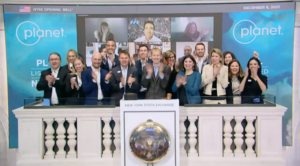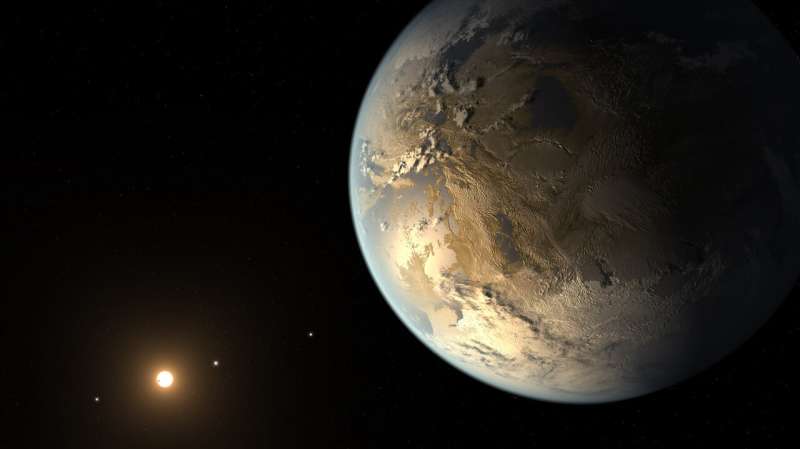Russia strikes deal with NASA for first cosmonaut on SpaceX flight
Thursday, 09 December 2021 01:22 Russia's only active female cosmonaut, Anna Kikina, will make her first trip into space in fall 2022 as the first Russian to fly on a SpaceX Crew Dragon capsule, Russia's space agency announced Wednesday on Twitter.
Dmitry Rogozin, director general of Russia's Roscosmos agency, said his program has pledged a seat of a Russian Soyuz capsule to an American astronaut in return.
Rogozin
Russia's only active female cosmonaut, Anna Kikina, will make her first trip into space in fall 2022 as the first Russian to fly on a SpaceX Crew Dragon capsule, Russia's space agency announced Wednesday on Twitter.
Dmitry Rogozin, director general of Russia's Roscosmos agency, said his program has pledged a seat of a Russian Soyuz capsule to an American astronaut in return.
Rogozin Planet decision that booted out Pluto is rooted in folklore, astrology
Thursday, 09 December 2021 01:22 As the new space race continues, a team of top researchers says one thing needs to be cleared up - what exactly is a planet?
In a study appearing recently in the journal Icarus, the researchers hope to set the record straight with a look at how a planet's definition has changed since the time of Galileo to the controversial decision the International Astronomical Union made in 2006 to crea
As the new space race continues, a team of top researchers says one thing needs to be cleared up - what exactly is a planet?
In a study appearing recently in the journal Icarus, the researchers hope to set the record straight with a look at how a planet's definition has changed since the time of Galileo to the controversial decision the International Astronomical Union made in 2006 to crea NASA's IXPE X-ray telescope will study neutron stars, pulsars, black holes
Thursday, 09 December 2021 01:22 NASA intends to learn more about stars, neutron stars, black holes, nebulae and other space objects by launching a new X-ray telescope satellite, the IXPE, from Florida early Thursday.
The $214 million IXPE satellite, or X-ray Polarimetry Explorer, will orbit the Earth as the first satellite dedicated to measuring the polarization of X-rays from a variety of cosmic sources, according to NA
NASA intends to learn more about stars, neutron stars, black holes, nebulae and other space objects by launching a new X-ray telescope satellite, the IXPE, from Florida early Thursday.
The $214 million IXPE satellite, or X-ray Polarimetry Explorer, will orbit the Earth as the first satellite dedicated to measuring the polarization of X-rays from a variety of cosmic sources, according to NA ESO telescope images planet around most massive star pair to date
Thursday, 09 December 2021 01:22 The European Southern Observatory's Very Large Telescope (ESO's VLT) has captured an image of a planet orbiting b Centauri, a two-star system that can be seen with the naked eye. This is the hottest and most massive planet-hosting star system found to date, and the planet was spotted orbiting it at 100 times the distance Jupiter orbits the Sun. Some astronomers believed planets could not exist a
The European Southern Observatory's Very Large Telescope (ESO's VLT) has captured an image of a planet orbiting b Centauri, a two-star system that can be seen with the naked eye. This is the hottest and most massive planet-hosting star system found to date, and the planet was spotted orbiting it at 100 times the distance Jupiter orbits the Sun. Some astronomers believed planets could not exist a Gravitational waves could be key to answering why more matter was left over after Big Bang
Thursday, 09 December 2021 01:22 A team of theoretical researchers have found it might be possible to detect Q-balls in gravitational waves, and their detection would answer why more matter than anti-matter to be left over after the Big Bang, reports a new study in Physical Review Letters.
The reason humans exist is because at some time in the first second of the Universe's existence, somehow more matter was produced than
A team of theoretical researchers have found it might be possible to detect Q-balls in gravitational waves, and their detection would answer why more matter than anti-matter to be left over after the Big Bang, reports a new study in Physical Review Letters.
The reason humans exist is because at some time in the first second of the Universe's existence, somehow more matter was produced than Simulated Webb Images of Quasar and Galaxy Surrounding Quasar
Thursday, 09 December 2021 01:22 Very distant, active supermassive black holes are the brightest beacons in the universe. Known as quasars, these behemoths are surrounded by equally distant galaxies. In recent decades, researchers have gone on a cosmic treasure hunt and identified the three most distant quasars known over the last three years - each more than 13 billion light-years from Earth. Astronomers theorize that it can t
Very distant, active supermassive black holes are the brightest beacons in the universe. Known as quasars, these behemoths are surrounded by equally distant galaxies. In recent decades, researchers have gone on a cosmic treasure hunt and identified the three most distant quasars known over the last three years - each more than 13 billion light-years from Earth. Astronomers theorize that it can t New technique reveals the age of massive Southern Cross star
Thursday, 09 December 2021 01:22 An international team of astronomers from Australia, the United States and Europe has for the first-time unlocked the interior structure of Beta Crucis - a bright blue giant star that features on the flags of Australia, Brazil, New Zealand, Papua New Guinea and Samoa.
With an entirely new approach, the team led by Dr Daniel Cotton, found the star to be 14.5 times as massive as the Sun and
An international team of astronomers from Australia, the United States and Europe has for the first-time unlocked the interior structure of Beta Crucis - a bright blue giant star that features on the flags of Australia, Brazil, New Zealand, Papua New Guinea and Samoa.
With an entirely new approach, the team led by Dr Daniel Cotton, found the star to be 14.5 times as massive as the Sun and Astronomers find final missing piece of galaxy cluster collision puzzle
Thursday, 09 December 2021 01:22 Astronomers have a model of how galaxy cluster collisions go through different stages, taking on various shapes. A blunt body shape turns into a sharp cone, which turns into a tongue-like shape. The first and last have been observed many times, but the sharp cone was always missing. Until now. Publication in Astronomy and Astrophysics.
Most galaxies live in clusters: groups of hundreds or
Astronomers have a model of how galaxy cluster collisions go through different stages, taking on various shapes. A blunt body shape turns into a sharp cone, which turns into a tongue-like shape. The first and last have been observed many times, but the sharp cone was always missing. Until now. Publication in Astronomy and Astrophysics.
Most galaxies live in clusters: groups of hundreds or Planet shares begin trading on New York Stock Exchange
Thursday, 09 December 2021 01:20
Planet completed its merger with special purpose acquisition company dMY Technology Group IV and began trading shares on the New York Stock Exchange Dec. 8 under the ticker symbol PL.
Space Development Agency to acquire 28 missile-tracking satellites to launch in late 2024
Wednesday, 08 December 2021 23:22
The Pentagon’s Space Development Agency is planning a new procurement of satellites that will be part of a global constellation of missile-tracking space sensors.
Europe awards study contract for disruptive satellite constellation ideas
Wednesday, 08 December 2021 22:01
A consortium of more than 20 European space companies said Dec. 8 it won a six-month contract to study disruptive ideas for Europe’s planned satellite broadband constellation.
ST Engineering leads $30 million fundraising for satellite IoT startup
Wednesday, 08 December 2021 21:57
Israeli startup hiSky said Dec. 8 it raised $30 million to mass-produce compact terminals designed to connect internet of things (IoT) devices to satellites in multiple orbits.
Space Force official: U.S. has a broad range of options to respond to space aggression
Wednesday, 08 December 2021 21:50
If Russia, China or any other country targeted a U.S. satellite with missiles or other weapons, the United States would respond in a “proportional manner,” said Brig. Gen. John Olson, the senior reserve officer of the U.S.
Op-ed | Space and SPACs: A COVID Romance?
Wednesday, 08 December 2021 21:00
For SPAC investors, the heavy focus on a quick ROI – and overall risk aversion – may ultimately make SPACs and the space sector an imperfect fit.
'Would you like a little ice with your exoplanet?' For Earth-like worlds, that may be a tall order
Wednesday, 08 December 2021 16:33
Exoplanets are experiencing a stratospheric rise. In the three decades since the first confirmed planet orbiting another star, scientists have catalogued more than 4,000 of them. As the list grows, so too does the desire to find Earth-like exoplanets—and to determine whether they could be life-sustaining oases like our own globe.
The coming decades should see the launch of new missions that can gather ever-larger amounts of data about exoplanets. Anticipating these future endeavors, a team at the University of Washington and the University of Bern has computationally simulated more than 200,000 hypothetical Earth-like worlds—planets that have the same size, mass, atmospheric composition and geography as modern Earth—all in orbit of stars like our sun.

